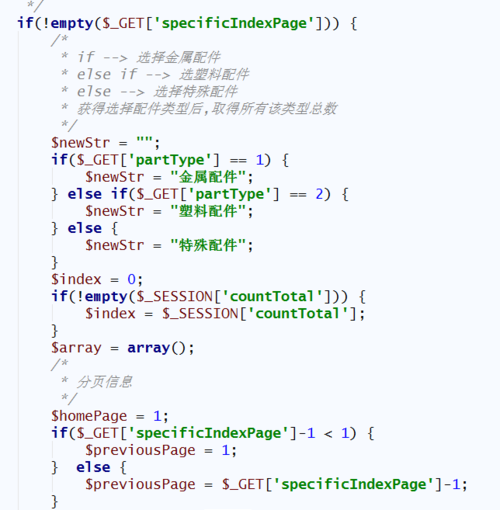AJAX分页代码
在Web开发中,我们经常需要处理大量的数据,为了提高用户体验,我们需要将这些数据分成多个页面进行展示,AJAX(Asynchronous JavaScript and XML)是一种在无需重新加载整个网页的情况下,与服务器交换数据并更新部分网页内容的技术,在本章节中,我们将学习如何使用AJAX实现分页功能。
1. 基本概念
分页是将大量数据分成多个较小的部分进行展示的过程,每个部分称为一页,用户可以在每一页之间切换以查看不同的数据,通过使用AJAX,我们可以在不刷新整个页面的情况下,向服务器请求新的数据并更新页面内容。
2. AJAX分页原理
AJAX分页的原理是:当用户点击下一页或上一页按钮时,JavaScript会发送一个AJAX请求到服务器,请求指定页的数据,服务器收到请求后,返回该页的数据,JavaScript将新数据插入到页面的相应位置,从而实现分页效果。
3. AJAX分页实现步骤
要实现AJAX分页,我们需要完成以下步骤:
1、创建一个HTML页面,包含分页控件(如上一页、下一页按钮)和用于显示数据的容器。
2、编写JavaScript代码,监听分页控件的事件(如点击事件)。
3、当分页控件被点击时,发送AJAX请求到服务器,请求指定页的数据。
4、服务器收到请求后,返回该页的数据。
5、使用JavaScript将新数据插入到页面的相应位置。
4. AJAX分页示例代码
以下是一个简单的AJAX分页示例代码:
<!DOCTYPE html>
<html lang="en">
<head>
<meta charset="UTF8">
<title>AJAX分页示例</title>
<script src="https://code.jquery.com/jquery3.6.0.min.js"></script>
</head>
<body>
<div id="content">加载中...</div>
<button id="prev">上一页</button>
<button id="next">下一页</button>
<script>
var currentPage = 1; // 当前页码
var pageSize = 10; // 每页显示的数据条数
var totalPages; // 总页数
var dataList = []; // 存储所有数据的数组
// 初始化数据列表
function initData() {
// 模拟从服务器获取数据
dataList = [/* ... */];
totalPages = Math.ceil(dataList.length / pageSize);
}
// 渲染数据列表
function renderData() {
var startIndex = (currentPage 1) * pageSize;
var endIndex = Math.min(startIndex + pageSize, dataList.length);
var pageData = dataList.slice(startIndex, endIndex);
var html = ;
for (var i = 0; i < pageData.length; i++) {
html += <p> + pageData[i] + </p>;
}
$(#content).html(html);
}
// 上一页操作
function prevPage() {
if (currentPage > 1) {
currentPage;
renderData();
} else {
alert(已经是第一页了);
}
}
// 下一页操作
function nextPage() {
if (currentPage < totalPages) {
currentPage++;
renderData();
} else {
alert(已经是最后一页了);
}
}
// 初始化数据并绑定事件监听器
$(document).ready(function () {
initData();
renderData();
$(#prev).click(prevPage);
$(#next).click(nextPage);
});
</script>
</body>
</html>
5. AJAX分页注意事项
在使用AJAX分页时,需要注意以下几点:
1、确保服务器端支持分页功能,并能够根据请求参数返回指定页的数据,可以使用page和size参数表示当前页码和每页显示的数据条数,服务器应返回一个JSON对象,包含total(总记录数)、rows(当前页的数据)等字段。
2、使用合适的数据结构和算法来存储和查询数据,可以使用数组来存储所有数据,使用二分查找算法来快速定位指定页的数据,这样可以减少AJAX请求的次数,提高性能。
使用Ajax进行分页是一种常见的Web开发技术,它可以在不重新加载整个页面的情况下更新页面的部分内容,下面提供一个简单的例子,展示如何使用Ajax实现介绍数据的分页。
这个例子包括两部分:HTML(用于显示介绍和分页按钮)和JavaScript(用于处理分页逻辑)。
HTML部分:
<!DOCTYPE html>
<html lang="en">
<head>
<meta charset="UTF8">
<title>Ajax 分页示例</title>
<style>
table, th, td {
border: 1px solid black;
bordercollapse: collapse;
}
th, td {
padding: 5px;
textalign: left;
}
</style>
</head>
<body>
<table id="dataTable">
<!数据将通过Ajax填充 >
</table>
<div id="pagination">
<!分页按钮将通过Ajax生成 >
</div>
<script src="path_to_your_ajax_script.js"></script>
</body>
</html>
JavaScript部分(Ajax分页逻辑):
// 假设数据来源于服务器端的某个API,这里通过页码(page)和每页显示数量(limit)来获取数据
let currentPage = 1;
let limit = 5;
function fetchData(page) {
// 这里模拟了Ajax请求,实际开发中需要用XMLHttpRequest或fetch API来请求数据
currentPage = page;
const url =你的数据接口地址?page=${page}&limit=${limit};
// 使用fetch API作为示例
fetch(url)
.then(response => response.json())
.then(data => {
// 填充介绍数据
fillTable(data);
// 生成分页按钮
generatePagination(data.totalPages);
})
.catch(error => console.error(Fetching error:, error));
}
function fillTable(data) {
const table = document.getElementById(dataTable);
table.innerHTML = ; // 清空介绍
// 添加表头
const thead = document.createElement(thead);
const headerRow = document.createElement(tr);
const headers = [ID, 名称, 年龄, 操作];
headers.forEach(headerText => {
const header = document.createElement(th);
header.textContent = headerText;
headerRow.appendChild(header);
});
thead.appendChild(headerRow);
table.appendChild(thead);
// 填充数据
const tbody = document.createElement(tbody);
data.data.forEach(rowData => {
const row = document.createElement(tr);
// 根据你的数据结构动态添加单元格
const cell = document.createElement(td);
cell.textContent = rowData.id; // 假设数据结构中有id字段
row.appendChild(cell);
const cellName = document.createElement(td);
cellName.textContent = rowData.name; // 假设数据结构中有name字段
row.appendChild(cellName);
const cellAge = document.createElement(td);
cellAge.textContent = rowData.age; // 假设数据结构中有age字段
row.appendChild(cellAge);
const cellAction = document.createElement(td);
// 这里可以添加需要的操作,比如编辑、删除按钮
row.appendChild(cellAction);
tbody.appendChild(row);
});
table.appendChild(tbody);
}
function generatePagination(totalPages) {
const paginationDiv = document.getElementById(pagination);
paginationDiv.innerHTML = ; // 清空分页按钮
// 生成前页按钮
const prevButton = document.createElement(button);
prevButton.textContent = 上一页;
prevButton.onclick = () => fetchData(currentPage 1);
if (currentPage === 1) prevButton.disabled = true;
paginationDiv.appendChild(prevButton);
// 生成页码按钮
for (let i = 1; i <= totalPages; i++) {
const pageButton = document.createElement(button);
pageButton.textContent = i;
pageButton.onclick = () => fetchData(i);
if (i === currentPage) pageButton.disabled = true; // 当前页码按钮不可点击
paginationDiv.appendChild(pageButton);
}
// 生成后页按钮
const nextButton = document.createElement(button);
nextButton.textContent = 下一页;
nextButton.onclick = () => fetchData(currentPage + 1);
if (currentPage === totalPages) nextButton.disabled = true;
pagination




